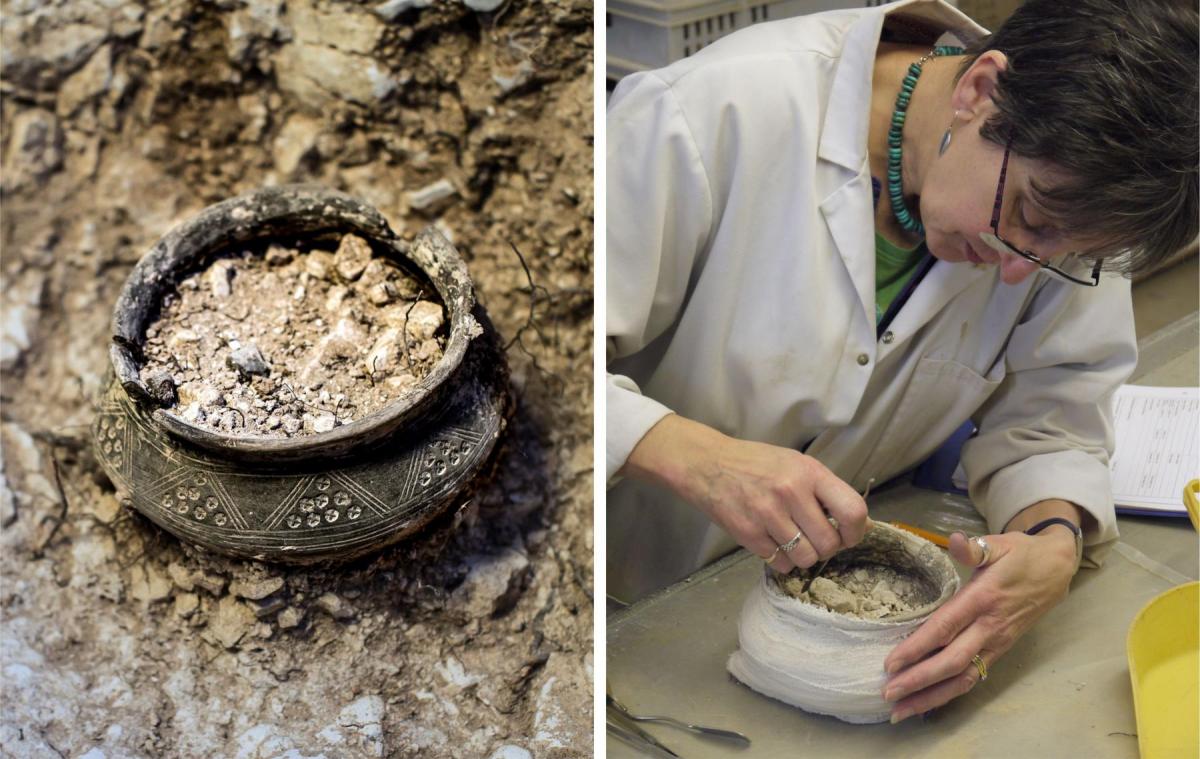Following the new discoveries made at Barrow Clump just before Christmas 2017, another surprise awaited us in January. The Breaking Ground Heritage / Operation Nightingale excavation at the end of November had revealed a further seven Anglo-Saxon graves, two containing pots, the first such vessels found at the site, both of which were lifted with their contents intact.
The complete, decorated pot – the highlight of the excavation – was emptied last week by Jackie McKinley, our principal osteoarchaeologist, but contained nothing obvious of interest. It may have originally held food or drink, and perhaps something may be found when the soil samples are processed … but we are not optimistic.

Left image © Harvey Mills
However, to our surprise, it was the second, rather unprepossessing and undecorated pot that took the starring role last week. Careful excavation of the contents by Emma Robertson, out trainee osteoarchaeologist, revealed this to contain cremated human bone – the first Anglo-Saxon cremation burial to be found at Barrow Clump and the furthest south-west in Britain, lying approximately 10 km beyond the four found at Collingbourne Ducis a decade ago.
As well as burnt bone, the pot contained a small pick or scoop from a toilet set and a fragment of melted copper alloy. It appears that the pot had been slightly damaged by a later inhumation grave, as well as by ploughing, but it may not be the only Anglo-Saxon cremation burial at Barrow Clump. The backfill of an inhumation grave excavated in 2014, just 20 m to the east, also contained a blob of melted copper alloy and a few tiny flakes of burnt bone, too small to identify – were these redeposited from another, disturbed cremation grave?